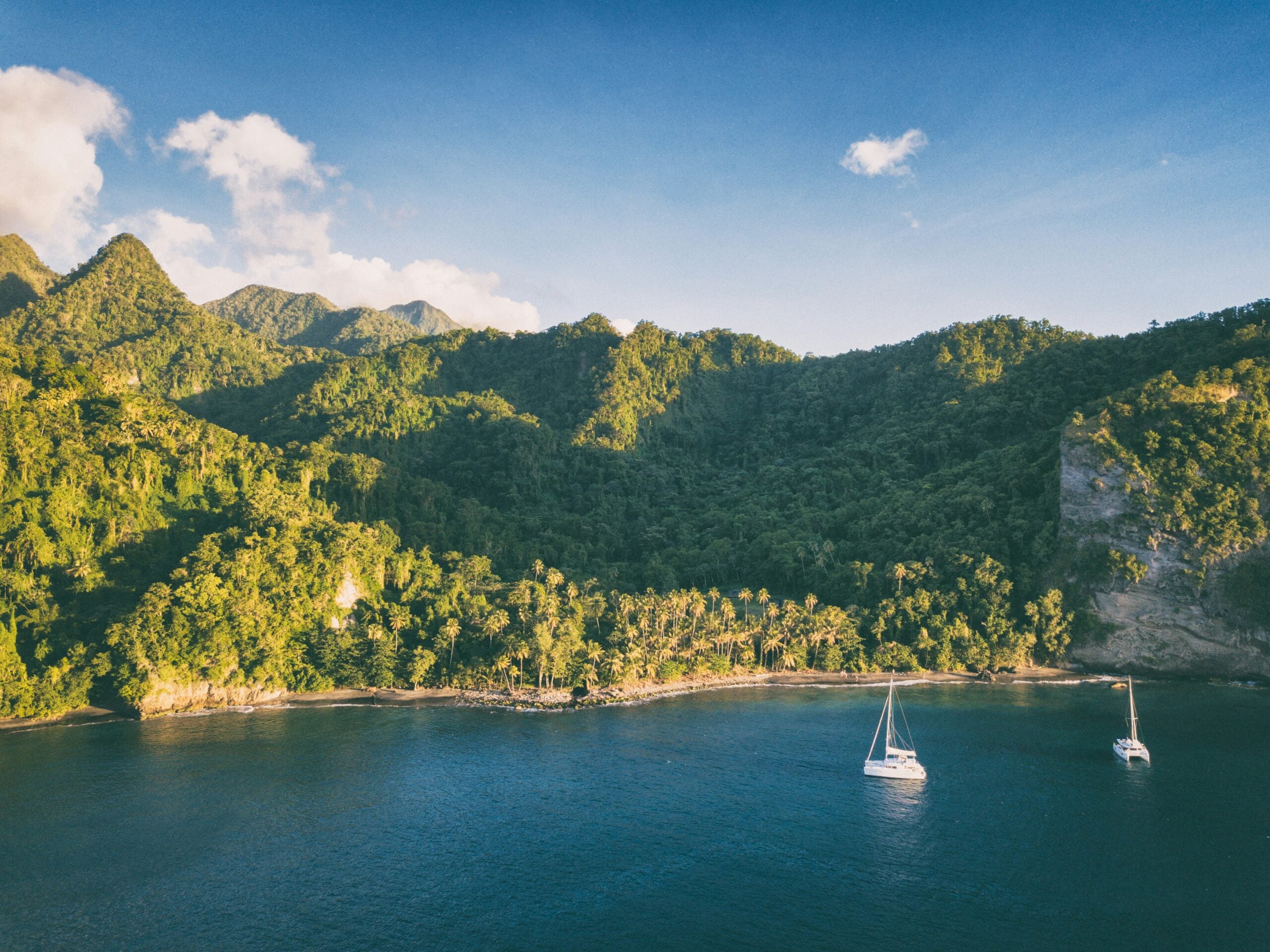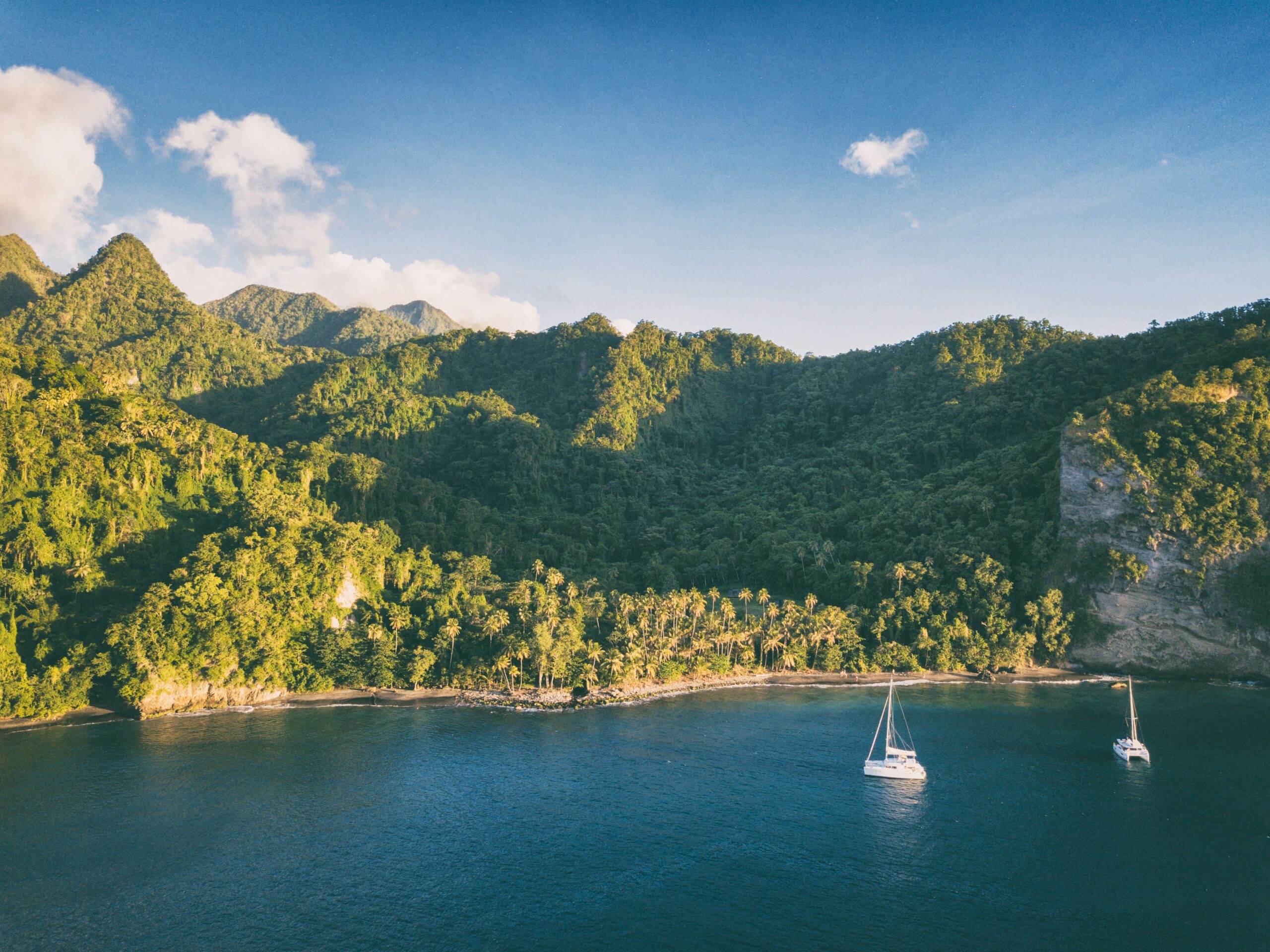Banner image courtesy of Christian Lendl
The Caribbean Sea cradles over 700 islands, each with its own distinct character and allure. While Barbados and Jamaica might dominate travel brochures, the region harbors numerous gems that balance accessibility with an authentic sense of discovery. These islands aren’t completely hidden—locals and seasoned travelers have celebrated them for generations—but they remain refreshingly unburdened by mass tourism. Here’s a journey through some of the Caribbean’s most rewarding not-quite-secret destinations.

Cuba: The Time Capsule
Cuba, the largest island in the Caribbean, offers an experience unlike any other in the region. For decades, political isolation preserved Cuba in a fascinating time warp where classic American cars from the 1950s cruise past Spanish colonial architecture. Havana’s streets pulse with the rhythms of son cubano and rumba, while the scent of cigars wafts through the air.
You might be thinking it’s still difficult to get into Cuba. Well, that changed in 2016, as the United States marked a historic change by allowing US citizens to travel under the “people-to-people” category (license). You can get an eVisa quite easily. EasyTouristCard.com does Cuba Visas online.
Beyond Havana lies Viñales Valley, where tobacco farmers tend their crops using centuries-old techniques against a backdrop of dramatic limestone formations called mogotes. The pristine beaches of Varadero contrast with the colonial charm of Trinidad, a UNESCO World Heritage site where cobblestone streets lead to pastel-colored buildings and lively plazas.
What makes Cuba special isn’t just its preserved past but its evolving present. The island’s private paladares (family-run restaurants) serve creative dishes that showcase Cuban cuisine’s Spanish, African, and Caribbean influences. Artists transform neighborhoods into open-air galleries, and small-scale entrepreneurs breathe new life into historical buildings.
Dominica: The Nature Island
Dominica stands apart from typical Caribbean postcards—instead of sprawling white-sand beaches, you’ll find dramatic volcanic landscapes, rainforests covering nearly two-thirds of the island, and 365 rivers. This mountainous paradise between Guadeloupe and Martinique attracts travelers seeking immersion in nature rather than resort amenities.
Hikers can traverse the 115-mile Waitukubuli National Trail, the Caribbean’s first long-distance hiking path, or climb to Boiling Lake, the world’s second-largest hot spring. Champagne Reef offers a unique snorkeling experience where volcanic vents release streams of bubbles through the ocean floor, creating a natural jacuzzi effect.
Dominica’s Kalinago Territory, home to the Caribbean’s last remaining pre-Columbian population, provides cultural experiences where visitors can learn traditional basket weaving and cassava processing. The island’s commitment to sustainability and eco-tourism makes it a model for responsible Caribbean development.
Guadeloupe: French Caribbean Elegance
Shaped like a butterfly, Guadeloupe combines French sophistication with Caribbean warmth. The island’s western wing, Basse-Terre, features rainforests and the towering La Soufrière volcano, while the eastern Grande-Terre offers golden beaches and sugarcane fields.
Guadeloupe’s markets burst with tropical fruits, spices, and local specialties like boudin créole (blood sausage) and accras de morue (cod fritters). The archipelago’s smaller islands—Les Saintes, Marie-Galante, and La Désirade—provide even more secluded experiences with historic windmills, pristine beaches, and excellent sailing conditions.
What distinguishes Guadeloupe is its accessibility to authentic Creole culture alongside modern conveniences. French is the official language, but Creole expressions color everyday conversation. The island celebrates its colonial resistance through museums like Mémorial ACTe, which explores the history of slavery and its lasting impact.
Bequia: The Sailor’s Haven
In the Grenadines archipelago lies Bequia (pronounced “beck-way”), a seven-square-mile island where maritime traditions remain central to daily life. The sheltered Admiralty Bay hosts yachts from around the world, while local craftsmen continue building boats by hand, a tradition passed through generations.
Bequia’s main settlement, Port Elizabeth, stretches along a picturesque harbor with colorful wooden buildings housing shops, restaurants, and guesthouses. The island’s beaches remain wonderfully undeveloped—Princess Margaret Beach offers perfect swimming conditions, while the more remote Spring Bay requires a short hike but rewards visitors with near solitude.
The island maintains a delicate balance between catering to visitors and preserving local character. Annual events like the Easter Regatta showcase sailing skills, while restaurants serve freshly caught fish prepared with a distinctive Bequian flair. What makes Bequia special is its scale—large enough to explore for days but small enough to feel like a community.
Saba: The Unexpected Mountain
Rising dramatically from the sea, Saba is a dormant volcano whose 5-square-mile surface is dominated by Mount Scenery, the Netherlands’ highest point. This Dutch Caribbean island has no beaches to speak of, yet divers travel worldwide for its protected marine park featuring pristine coral formations and abundant sea life.
The island’s four villages feature immaculately maintained cottages with red roofs and white gingerbread trim, giving Saba its nickname, “The Unspoiled Queen.” The island’s single road, aptly named “The Road,” was considered impossible to build until local resident Josephus Lambert Hassell designed and constructed it in the early 20th century.
Saba’s cloud forest ecosystem supports unique plant and animal species, making it a paradise for hikers and naturalists. The island’s tiny size and modest population (about 2,000 residents) create an intimate atmosphere where visitors quickly feel connected to local life.
Each of these islands offers something beyond the typical Caribbean experience—authentic culture, natural wonders, and connections with local communities that transform a vacation into a journey of discovery. While they may not be completely secret, their relative obscurity compared to their famous neighbors helps preserve the very qualities that make them exceptional destinations for travelers seeking substance alongside sunshine.


